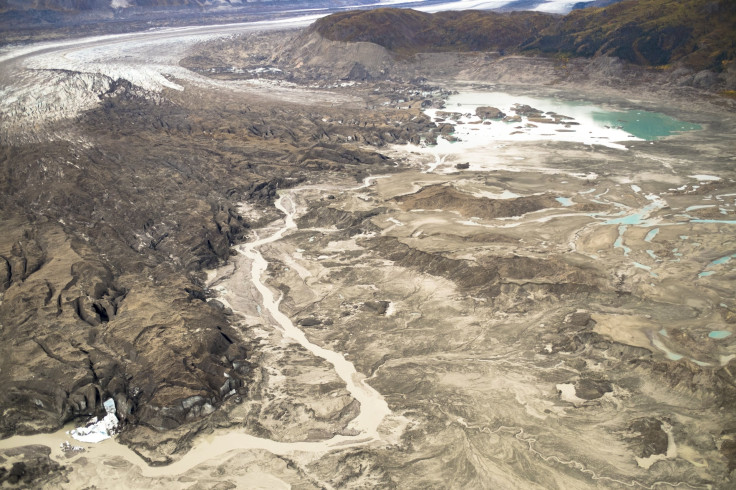Climate Change And 'River Piracy': Glacier Melt Causes Canada's Slims River To Vanish In Just Four Days

Over the course of just a few days last spring, a river fed by a melting glacier in Canada’s Yukon region completely changed course — an unprecedented event that scientists say is the first case of “river piracy” observed over such short period of time. The culprit? Greenhouse gas-driven climate change.
“Geologists have seen river piracy, but nobody to our knowledge has documented it happening in our lifetime. People had looked at the geological record — thousands or millions of years ago — not the 21st century, where it’s happening under our noses,” Dan Shugar, a geoscientist at the University of Washington Tacoma, and lead author of a study detailing the observations, said in a statement. “So far, a lot of the scientific work surrounding glaciers and climate change has been focused on sea-level rise. Our study shows there may be other underappreciated, unanticipated effects of glacial retreat.”
While studying the Slims River — which, for hundreds of years, was fed by meltwater from Kaskawulsh Glacier in northern Canada and which, in turn, fed the Kluane Lake in Yukon — Shugar and his colleagues discovered an abrupt drop in water levels over four days, from May 26 to 29. By late summer, they found that there was barely any water flowing in the river.
Further observations revealed something even more surprising. Much of the meltwater that flowed into the Bering Sea via the Slims River had been, as a result of the glacier’s receding toe, redirected south toward the Gulf of Alaska. As a result, even as the Slims River dried up, the south-flowing Alsek River, a popular whitewater rafting river that is a UNESCO world heritage site, began running higher.

Until now, scientists thought that such “river piracy” phenomenon, wherein the waters of one stream are diverted into another one, only took place over a period of centuries, not days.
“For the last 300 years, Slims River flowed out to the Bering Sea, and the smaller Kaskawulsh River flowed to the Gulf of Alaska. What we found was the glacial lake that fed Slims River had actually changed its outlet,” Shugar said. “A 30-meter (100-foot) canyon had been carved through the terminus of the glacier. Meltwater was flowing through that canyon from one lake into another glacial lake, almost like when you see champagne poured into glasses that are stacked in a pyramid.”
The researchers attribute the drastic acceleration in the glacier’s retreat to the higher than average global temperatures the world witnessed last year — temperatures that, in the geological scale of things, altered the local landscape in the blink of an eye.
“The event is a bit idiosyncratic, given the peculiar geographic situation in which it happened, but in a broader sense it highlights the huge changes that glaciers are undergoing around the world due to climate change,” study co-author John Clague from Canada’s Simon Fraser University said in the statement.
© Copyright IBTimes 2024. All rights reserved.





















